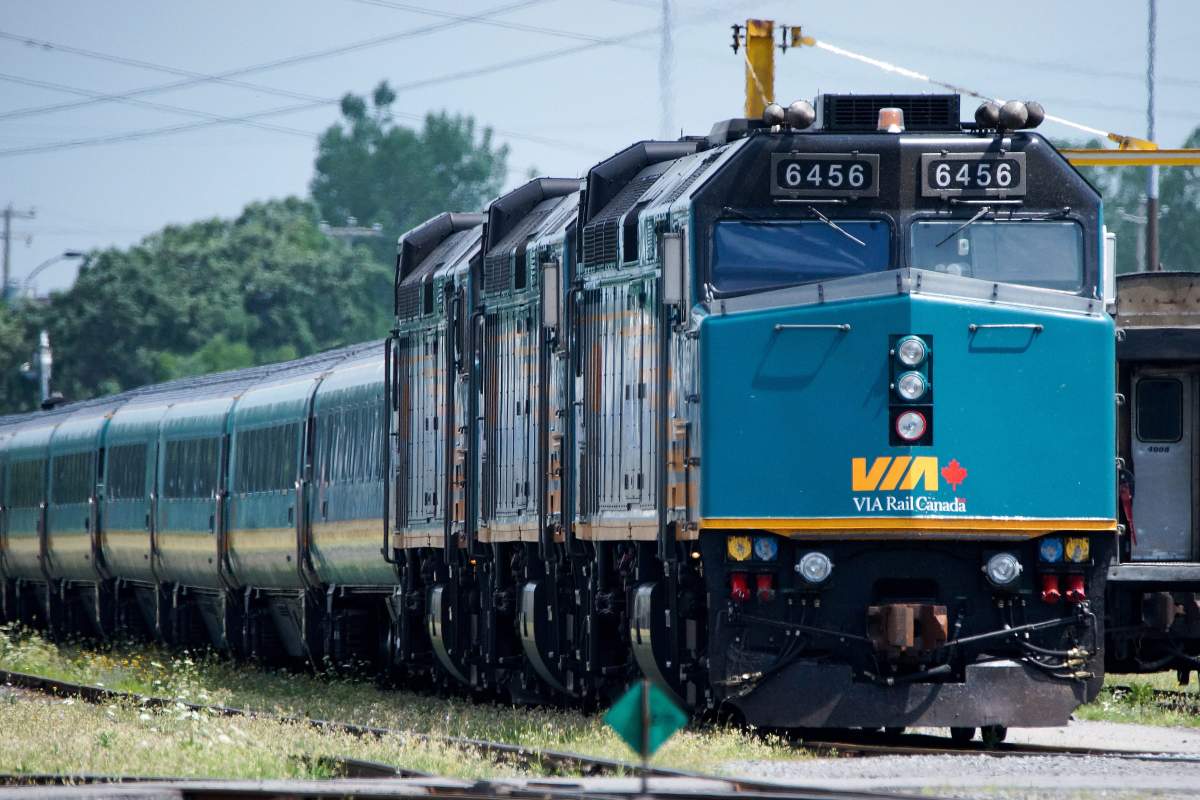More than two years after the federal government set aside $3.3 million to look into the possibility of a new, faster rail link between major cities in Ontario and Quebec, only around one 10th of that budget has actually been spent.

Documents tabled recently in the House of Commons reveal that since the funding was announced in budget 2016, Transport Canada has spent a total of $386,815 on five separate studies linked to Via Rail’s high-frequency rail proposal for the Windsor-Quebec City corridor.
WATCH: Vancouver-Seattle-Portland high speed rail study

The proposal, if it ever became reality, would allow trains in the densely populated corridor to reach top speeds of 177 km/h along new sections of dedicated passenger tracks. The time it takes to get from Toronto to Montreal, or Ottawa to Quebec City could, according to Via Rail, be sliced by as much as 25 per cent.
That’s still not nearly as fast as some of the “bullet trains” in other parts of the world, which have reached speeds of between 300 km/h and 600 km/h.
The studies done to date by Transport Canada have included one examining the “cost benefit, economic and tourism impact” of Via’s plan, along with one looking at “alternative strategies to add passenger rail capacity” along the corridor.

Get daily National news
READ MORE: 1,500 Chinese engineers build train station in 9 hours
Two others looked at how the new rail line could reduce both congestion on highways and greenhouse gas emissions. All were done in either 2016 or 2017.
“Via Rail has provided the federal government with studies on its proposal which are part of the ongoing review of the project,” the documents add.
READ MORE: Toronto-Montreal Hyperloop plan could see travel time cut to 39 minutes
A spokesperson for Transport Canada said Thursday that the government “is proceeding responsibly” when it comes to potential rail expansion.
“As with any large scale infrastructure project, a phased approach is prudent to ensure there is sufficient rigor and robustness in our analysis,” the department said in an emailed statement.
Via Rail issued a statement echoing those sentiments, adding that “our teams expect to conclude this work in the coming months in order to support decision-making by the government shortly thereafter.”
But as part of budget 2018, tabled in late February, the Liberals announced $8 million for yet more study. As of late April, none of that money had been spent. Since 2017, Transport Canada has also been home to a “Surface Passenger Transportation Policy group” that employs about 10 people, some of whom dedicate at least part of their time to looking into Via Rail’s proposal.
“(The) budget 2018 funding will be used to undertake foundational work required to advance any project of this scale, including additional economic analysis and other studies on the project, which would help to inform a final investment decision,” Transport Canada said.
‘Not a slam dunk’
The prospect of high-speed trains linking major cities (or at least trains that aren’t constantly sharing tracks with freight) has been dangled tantalizingly in front of Canadian commuters for years. Dozens of studies have been conducted, but nothing has ever materialized.
Paul Langan, president of the advocacy group High Speed Rail Canada, said he suspects Ottawa is stalling on Via’s proposal for a good reason: it doesn’t make sense.
“Via Rail is suggesting this option of travelling through sparsely populated areas and only achieving trip times from the 1970s,” Langan said.
“I think that’s, at the end of the day, what the issue is … I’m not sure what justification anybody could use to spend $4 billion to get trip times from 1973. And I think that’s why the government is being so ‘I dunno’ about this. It’s definitely not a slam dunk.”
The project would indeed cost billions of dollars, some of which would likely be federal money. But Via’s proposal isn’t the only one currently on the table, so it may have to compete for taxpayer funding if, and when, it moves ahead.
WATCH: Ontario Liberals announce $15M study for high-speed rail between Toronto, Windsor

In May, then-Ontario premier Kathleen Wynne announced her province would begin preliminary design work for a high-speed rail corridor connecting Toronto and Windsor, and start an environmental assessment. Wynne’s pre-election budget in March pledged an $11-billion “initial investment” to support construction.
It’s unclear if the project will move forward under Ontario’s new premier, Doug Ford.
The more futuristic idea of creating a hyperloop system — in which passengers ride in a cylindrical vehicle that accelerates via electric propulsion through a low-pressure tube — has also been floated.


Comments